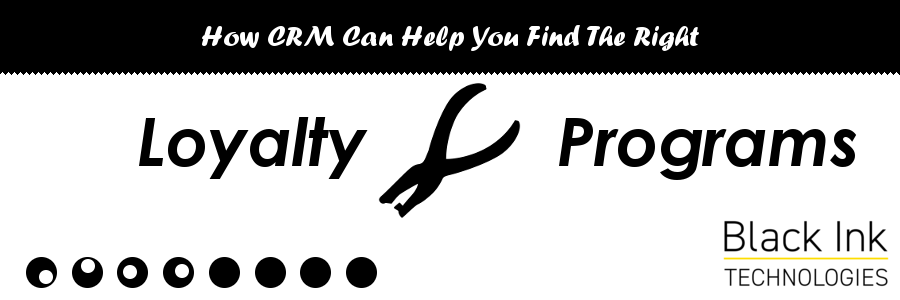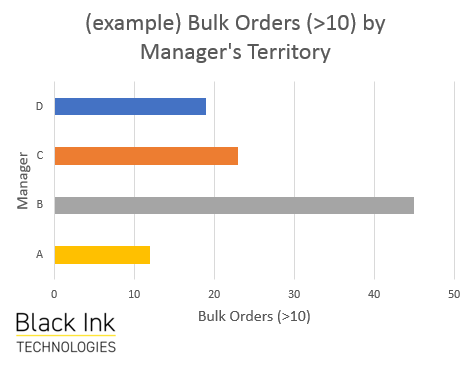How CRM Can Help You Improve Your Loyalty Programs
by Black Ink Team

By analyzing a CRM database, you can identify and compare trends in the purchasing behavior of your most valuable customers/clients vis-à-vis loyalty programs that you have implemented, and in doing so make useful insights into which types of loyalty programs will work best for you moving forward. CRM offers other advantages when it comes to implementing loyalty programs, but we will get to those later.
Imagine you have incentivized your customers/clients in the past for making repeat purchases, by giving them discounts on every tenth item or instance of service they buy. You can by using CRM conduct tests where, for some of the regions that you do business in, you instead offer discounts on every ninth item or service, or on every eleventh, etc., and then after a certain amount of time compare the results. Doing this helps you narrow down what specific incentives or ‘added bonuses’ positively affect the behavior of your customers/clients the most.
Another test CRM can be used for is separating your customer/client list, assigning ‘territories’ to different managers who may have their own ideas about what loyalty programs should be utilized, and then let them all implement each of their respective loyalty programs for a predetermined period. Doing this may motivate your managers to strive harder to outperform their peers, since they will know that at the end there will be a quantitative measure determining which one of them had the most right idea.

One way to help make sure that your customers/clients actually receive the benefits that they are entitled to, through one of your various loyalty programs, is to add ‘callouts’ to your CRM - reminders designating certain purchase orders as ones that require loyalty program incentives to be added. Notifications that remind your warehouse staff which shipments must include promotional items and which ones should not give them more lead time to make necessary adjustments to things like packaging, labels, etc.
Some CRM platforms can do more than just provide you with the data; they can ‘visualize’ it for you, too. While using a CRM with built-in visualization capabilities, like EyeOn Demand: Customer, you will save time by not having to switch between programs to see your data displayed as a chart, a graph, a map, or etc. Furthermore, granted that their permissions are set as such, your coworkers will be able to do their own analysis on the same exact data, making cross-validation checks easier to perform than if the data is not readily available to them.
Integrating a CRM into your marketing and sales processes makes it easier to rollout loyalty programs, keep track of which orders must be discounted or include promotional items associated with loyalty programs, and to perform analysis on the successes or failures of loyalty programs. As with any software solution, there is a learning curve that comes with adopting CRM software. But, if your organization has been conducting business at levels at which one would start to consider needing a CRM, chances are that it can handle implementing and mastering one with ease.
